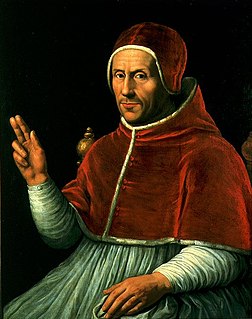 W
WPope Adrian VI, born Adriaan Florensz Boeyens, was head of the Catholic Church and ruler of the Papal States from 9 January 1522 until his death on 14 September 1523. The only Dutchman so far to become pope, he was the last non-Italian pope until Polish John Paul II, 455 years later.
 W
WPieter Aertsen, called Lange Piet because of his height, was a Dutch painter in the style of Northern Mannerism. He is credited with the invention of the monumental genre scene, which combines still life and genre painting and often also includes a biblical scene in the background. He was active in his native city Amsterdam but also worked for a long period in Antwerp, then the centre of artistic life in the Netherlands.
 W
WLaurens Jacobsz Alteras was a 17th-century Dutch vice admiral who distinguished himself as fleet commander under Jacob van Heemskerck in the battle of Gibraltar of 1607.
 W
WMenso Alting was a Dutch Reformed preacher and reformer.
 W
WJan van Amstel, or Jan de Hollander, was a Dutch Northern Renaissance painter.
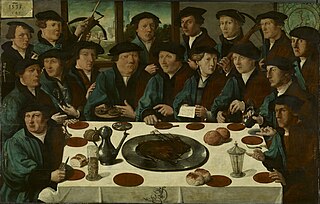 W
WCornelis Anthonisz., Anthonisz. also spelled Anthonissen or Teunissen, was a Dutch painter, engraver, and mapmaker.
 W
WJacobus Arminius, the Latinized name of Jakob Hermanszoon, was a Dutch theologian from the Protestant Reformation period whose views became the basis of Arminianism and the Dutch Remonstrant movement. He served from 1603 as professor in theology at the University of Leiden and wrote many books and treatises on theology.
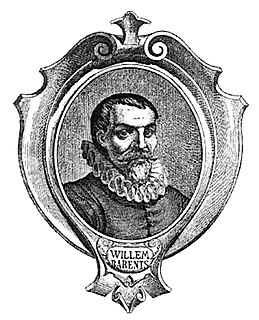 W
WWillem Barentsz, anglicized as William Barents or Barentz, was a Dutch navigator, cartographer, and Arctic explorer.
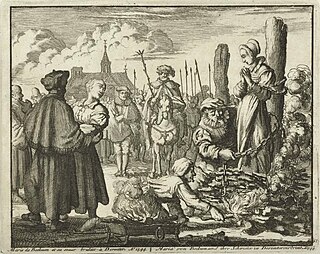 W
WMaria van Beckum was a Dutch noblewoman and Anabaptist executed for heresy.
 W
WUrsula van Beckum was a Dutch Anabaptist noblewoman who was burned at the stake for heresy in Delden, the Netherlands.
 W
WWillem IV, Count van den Bergh was Stadtholder of Guelders and Zutphen from 1581 until his arrest for suspected treason in 1583.
 W
WZuster Bertken was a Dutch anchorite.
 W
WGerrit Pieter Bicker (1554–1604) was a Dutch merchant and one of the founders of the Compagnie van Verre and its successor the Dutch East India Company.
 W
WPeter Canisius was a renowned Dutch Jesuit Catholic priest. He became known for his strong support for the Catholic faith during the Protestant Reformation in Germany, Austria, Bohemia, Moravia, Switzerland and the United Kingdom. The restoration of the Catholic Church in Germany after the Protestant Reformation is largely attributed to the work there of the Society of Jesus, which he led. He is venerated in the Catholic Church as a saint and as a Doctor of the Church.
 W
WCharlotte of Bourbon was a Princess consort of Orange as the third spouse of William the Silent, Prince of Orange, the main leader of the Dutch revolt against the Spanish. She was the fourth daughter of Louis, Duke of Montpensier and Jacqueline de Longwy, Countess of Bar-sur-Seine.
 W
WWendelmoet Claesdochter was a Dutch Lutheran who was executed for heresy by strangulation followed by burning, and is known as the first woman victim to the religious persecutions in the Netherlands during the reign of Emperor Charles V.
 W
WMargaretha Coppier or Margaretha van Kalslagen was a Dutch noble and a heroine of the Dutch war of liberation.
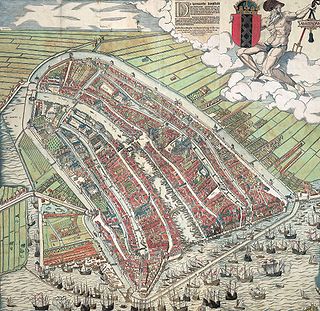 W
WCornelis Pietersz. Boom was a Dutch landowner and shipbuilder who was involved in various disputes over opening up the Lastage area to the east of Amsterdam. His two sons and one grandson were mayors of Amsterdam.
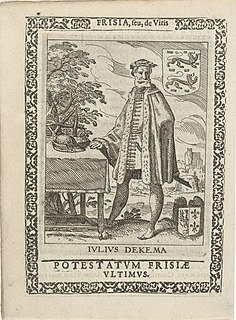 W
WJuw Dekema was a Frisian chieftain and Schieringer in Weidum and Baard, who was elected as potestate of Friesland in 1494 at the diet of Sneek. In 1498 he asked Albrecht of Saxony to rule the land. Juw served as a councilor at the Court of Friesland (1500–1515) and magistrate of Baarderadeel (1510–1512).
 W
WPieter van der Does was a Dutch admiral. He was the son of Jacob van der Does (c.1500-1577), schepen of Leiden during its siege.
 W
WPier Gerlofs Donia was a Frisian rebel leader and pirate. He is best known by his West Frisian nickname Grutte Pier, or by the Dutch translation Grote Pier which referred to his legendary size and strength.
 W
WAnneke Esaiasdochter, was a Dutch Anabaptist executed as a heretic and at the time regarded as a Protestant martyr.
 W
WKlaas Evertszoon, also called Nicolaus Everardi (1461/62–1532) was a Dutch jurist and the father of Johannes Secundus, an acclaimed poet. He is not to be confused with Nicolaus Everardi (1495–1570) and his son Nicolaus Everardi (1537–86), both professors in Ingolstadt.
 W
WChristiaan or Christian van der Goes, a Dutch nobleman, was schout of Delft from 1562 to 1577.
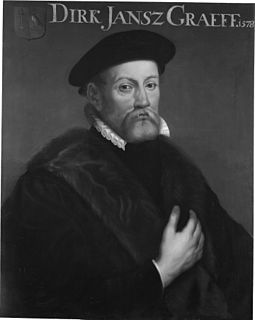 W
WDiederik Jansz Graeff, also Dirk Jansz Graeff, Lord of the manor Vredenhof, first illustrious member of the De Graeff family, was a rich merchant, ship-owner and politician. Diederik Graeff was also the founder of a regent dynastie of the Dutch Golden Age and the short time of the First Stadtholderless Period that retained power and influence for centuries and produced a number of ministers. He was the first Mayor of Amsterdam from the De Graeff family.
 W
WSteven van der Hagen was the first admiral of the Dutch East India Company (VOC). He made three visits to the East Indies, spending six years in all there. He was appointed to the Raad van Indië. Van der Hagen protested against the harsh administration of the administrators, who wanted a monopoly on the clove trade and were willing to fight against their Spanish, Portuguese, English or Asiatic trade competitors in order to get it. Laurens Reael and Steven van der Hagen wrote with disapproval on how the Heren XVII treated the interests and laws of the Maluku population.
 W
WKenau Simonsdochter Hasselaer (1526–1588) was a wood merchant of Haarlem, who became a legendary folk hero for her fearless defense of the city against the Spanish invaders during the siege of Haarlem in 1573.
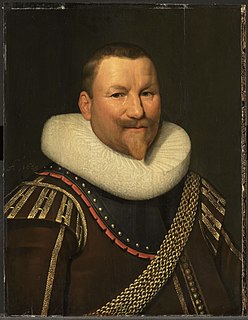 W
WPiet Pieterszoon Hein was a Dutch admiral and privateer for the Dutch Republic during the Eighty Years' War. Hein was the first and the last to capture a large part of a Spanish treasure fleet which transported huge amounts of gold and silver from Spanish America to Spain. The amount of silver taken was so big that it resulted in the rise of the price of silver worldwide and the near bankruptcy of Spain.
 W
WSteven Cornelisz. van Herwijck, was a Netherlandish sculptor and gem engraver famous for his portrait medallions and medals. He spent two periods of his career in England, where he died. It has recently been suggested that he is the "famous paynter Steven" mentioned in an inventory of 1590, who has traditionally been identified as Steven van der Meulen.
 W
WJohannes "Jan" Heyns was a Flemish-Brabantic architect.
 W
WJodocus Hondius was a Flemish engraver and cartographer. He is sometimes called Jodocus Hondius the Elder to distinguish him from his son Jodocus Hondius II. Hondius is best known for his early maps of the New World and Europe, for re-establishing the reputation of the work of Gerard Mercator, and for his portraits of Francis Drake. One of the notable figures in the Golden Age of Dutch/Netherlandish cartography, he helped establish Amsterdam as the center of cartography in Europe in the 17th century.
 W
WCornelis de Hooghe was a 16th-century engraver and mapmaker from the Northern Netherlands.
 W
WPhilip de Montmorency, also known as Count of Horn or Hoorne or Hoorn, was a victim of the Inquisition in the Spanish Netherlands.
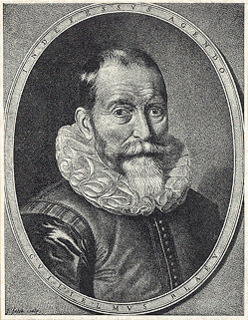 W
WWillem Janszoon, sometimes abbreviated to Willem Jansz., was a Dutch navigator and colonial governor. Janszoon served in the Netherlands East Indies in the periods 1603–1611 and 1612–1616, including as governor of Fort Henricus on the island of Solor. He is the first European known to have seen the coast of Australia during his voyage of 1605–1606.
 W
WJacob Lambrechtsz. Loncke (1580–1644) was a Dutch Golden Age painter from Zierikzee.
 W
WPaulus Merula, or Paul van Merle was a Dutch jurist, classicist, historian, geographer and librarian.
 W
WJoos de Moor was a Dutch Vice Admiral of Zeeland from the 16th century. In 1603 in the Battle of Sluis he defeated a Spanish fleet under Admiral Federico Spinola. He was the son of Jan de Moor, first vice-admiral of Zeeland. He was married to Dina Crins, Janneken Ingels, and Catarina Struvingts. He died at Vlissingen and is buried in the St James the Great Church.
 W
WCountess Maria of Nassau was the second daughter of William the Silent by his first wife Anna of Egmond and Buren. She was named after William's first daughter, Maria, who had died in infancy.
 W
W"Pallache" – also de Palacio(s), Palache, Palaçi, Palachi, Palacci, Palaggi, and many other variations – is the surname of a prominent, Ladino-speaking, Sephardic Jewish family from the Iberian Peninsula, who spread mostly through the Mediterranean after the Alhambra Decree of March 31, 1492, and related events.
 W
WSamuel Pallache was a Jewish Moroccan-born merchant, diplomat, and pirate of the Pallache family, who, as envoy, concluded a treaty with the Dutch Republic in 1608. He is likely an ancestor of Haim Palachi of 19th-century Izmir.
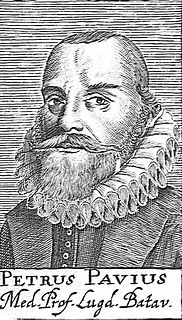 W
WPieter Pauw, was a Dutch botanist and anatomist. He was a student of Hieronymus Fabricius. He was the first Anatomy Professor at University of Leiden.
 W
WPhilip William, Prince of Orange was the eldest son of William the Silent by his first wife Anna van Egmont. He became Prince of Orange in 1584 and Knight of the Golden Fleece in 1599.
 W
WAlbert Pighius (Pigghe) was a Dutch Roman Catholic theologian, mathematician, and astronomer.
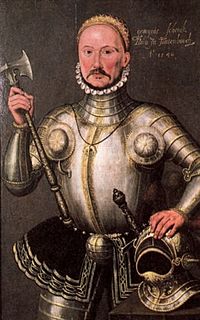 W
WGeorg Schenck van Toutenburg was Stadhouder of Friesland (1521-1540). Later he was also Stadholder of Overijssel, Drenthe and Groningen. His son Frederick was the first archbishop of Utrecht.
 W
WCornelius de Schepper (1503?-1555) was a Flemish counsellor and ambassador for the Holy Roman Emperor Charles V, Ferdinand I of Austria and Mary of Hungary, governor of the Netherlands. He is also known by his Latin name Scepperus.
 W
WMaria van Schooten (1555–1573) was a Dutch heroine from the Eighty Years' War. She died from the injuries she received after having participated in the defense during the Siege of Haarlem and was given a public funeral with full military honors. She is believed to have been one of the women led by Kenau Simonsdochter Hasselaer, a legendary heroine who helped defend Haarlem against the Spanish invaders.
 W
WJacob Taets van Amerongen was a land commander of the Utrecht-based order of Teutonic Knights in what are now the Netherlands. He made the pilgrimage to the Holy Land as a young man. He became commander of the order at a time when Protestants were gaining control of northern Europe. He managed to resist demands to dissolve the order and use its property for charity. Soon after his death the order became a Protestant organization.
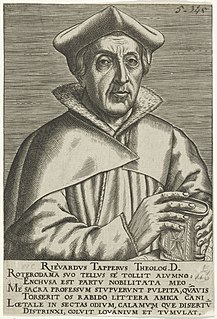 W
WRuard Tapper (1487–1559) was a Dutch theologian of the Catholic Reformation, and a chancellor of Leuven University.
 W
WJohann Tserclaes, Count of Tilly was a field marshal who commanded the Catholic League's forces in the Thirty Years' War. From 1620–31, he had an unmatched and demoralizing string of important victories against the Protestants, including White Mountain, Wimpfen, Höchst, Stadtlohn and the Conquest of the Palatinate. He destroyed a Danish army at Lutter and sacked the Protestant city of Magdeburg, which caused the death of some 20,000 of the city's inhabitants, both defenders and non-combatants, out of a total population of 25,000.
 W
WJacobus Verheiden was a Dutch schoolmaster known as an author.
 W
WAnna Roemers Visscher was a Dutch artist, poet, and translator.
 W
WAelius Everhardus Vorstius was a Dutch physician, botanist and university professor at Leyden University from 1598 to 1624.
 W
WSasbout Vosmeer was the first apostolic vicar to the Dutch Mission and succeeded Frederick Schenck as the second Archbishop of Utrecht (1602-1614).
 W
WJacob Willekens or Wilckens (1564–1649) was a Dutch admiral on a fleet to the Dutch Indies, and a herring seller, who went to sea again at the age of fifty for the Dutch West Indies Company. His most well-known success was the conquest of São Salvador da Bahia, the then capital of Brazil. His fleet, which included Dutch corsair Piet Hein as vice admiral, departed from Texel on December 22, 1623 with between 26-36 ships and 3,300 sailors towards South America. At the beginning of June 1624, they began their attack from sea and soon captured the Portuguese stronghold with little resistance. They occupied Bahia for over a year before the local population took up arms under acting governor Matias de Albuquerque and Archbishop Dom Marcos Teixeira who eventually expelled them with the help of a combined Spanish-Portuguese fleet numbering 52 warships and 12,000 soldiers in May 1625. This was the first major WIC privateering expedition to the region.